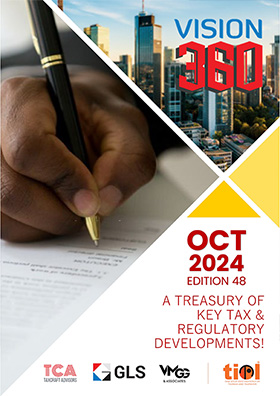I-T - For computing income from house property, rent paid for land, which is taken on lease for purpose of constructing superstructure is to be reduced from composite rent received for land & building : ITAT
By TIOL News Service
CHENNAI, SEPT 13, 2018:THE ISSUE IS - Whether for computing income from house property u/s 23 and 24, the rent paid for the land, which is taken on lease for the purpose of constructing superstructure be reduced from composite rent received for land and building. YES IS THE VERDICT.
Facts of the case
The assessee an Individual, had let out two properties during the years under consideration. The land did not belong to the assessee. The superstructure belonged to the assessee. As per the rental agreement with landlord, the assessee was allowed to sub-lease the property. Accordingly, the assessee sub-let the property. The assessee received a composite rent for land and building. The lease rent paid for the land was reduced by assessee and balance amount was offered for taxation. However the AO was not convinced and he computed tax on composite rent received. Aggrieved assessee filed appeal before CIT(A) and claimed that the lease rent payable to the original owner, was be reduced while computing income from house property under Section 24 of the Act. But CIT(A) upheld the order of AO.
Tribunal held that,
++ Tamil Nadu Buildings (Lease and Rent Control) Act, 1960 provides for determination of annual rental value. In the absence of any method for computation of annual rental value in the Income-tax Act, method prescribed under Tamil Nadu Buildings (Lease and Rent Control) Act, 1960 has to be adopted. The market value of the land and cost of construction of the building has to be estimated for the purpose of determining the annual rental value. In case, the assessee is not the owner of the land on which the superstructure was constructed, the market value of the land or the lease rent paid / payable for the land needs to be excluded. Therefore, for computing the annual rental value of the building, the lease rental paid or payable by the assessee as per lease deed has to be excluded. The rent received or receivable by the assessee for the building has to be reduced from the rent paid or payable by the assessee in respect of land to the land owners. Therefore, by any stretch of imagination, the rent paid or payable by the assessee in respect of land cannot form part of annual rental value or the actual rent received or receivable for the building. What is received or receivable by the assessee has to confine in respect of the ownership of the building since, admittedly, the land belongs to third party. Therefore, the lease amount paid or payable to the landlord of the land has to be reduced while computing the annual rental value or income from house property under Section 22, 23 and 24 of the Act. Accordingly, the orders of both the authorities below are set aside and the Assessing Officer is directed to recompute the rent received or receivable by the assessee after excluding the lease amount paid or payable by the assessee to the landlord / owner of the land. In the result, the appeals filed by the assessee was allowed.
(See 2018-TIOL-1522-ITAT-MAD)
| 














